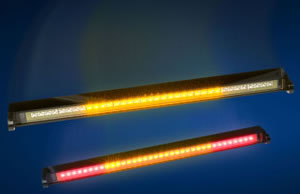 The invention of the brake light on the car was arguably the most important addition to the safety of driving, probably trailed by the availability of ABS.
The invention of the brake light on the car was arguably the most important addition to the safety of driving, probably trailed by the availability of ABS.
Somehow, perhaps because brake lights are so important, there’s been no significant advance in their development, beyond changing the bulbs to a brighter version.
In essence brake lights are binary, they’re either on or off, with no indication given as to the weight of the braking or intensity of deceleration.
Looks like Virginia Tech’s College of Engineering is aiming to tackle that, something, by strange coincidence, that had popped into my mind again last week.
Ph.D. mechanical engineering student, John Hennage, Virginia Tech Mechanical Engineering Professor Mehdi Ahmadian and businessman Meade Gwinn, have teamed up to create an intelligent brake light system.
It’s a horizontal bar of LED lights that, when combined with a deceleration sensor, alters the lights displayed depending on how quickly the vehicle is slowing down.
At a standard slow down, the lights in the middle of the bar glow amber. If it’s judged as crossing the next threshold, red lights flash on either side of the amber lights. In the most extreme situation all of the lights flash red.
Pretty neat.
It will be interesting to see how long it takes to be integrated in to actual productions cars.
If you just can’t wait to see them in action, and we wish we were free, head on over to the Mid-America Trucking Show at the Kentucky Fair and Exposition Center in Louisville on March 27-29, 2008. Somehow that event isn’t in our diary.